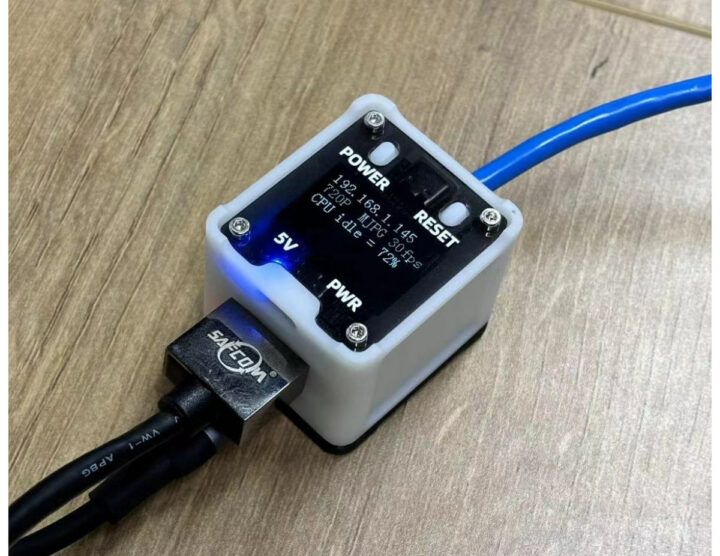Sipeed NanoKVM is a tiny KVM over IP solution based on the Lichee RVNano RISC-V microcontroller board that offers most of the features provided by the popular Raspberry Pi 4-based PiKVM solution allowing users to fully remote control a host such as a computer, server, or SBC down to the BIOS level and power on/off.
Two variants are available, namely the NanoKVM Lite and NanoKVM Full. Both support up to 1080p60 displays, virtual USB keyboard and mouse, USB storage emulation, Ethernet with Wake-on-LAN, and IPMI (Intelligent Platform Management Interface) through serial interfaces, but the Full version also adds a resin enclosure, 0.96-inch information display, ATX power control through USB-C port, a microSD card with the firmware, and optional WiFi or PoE support
Sipeed NanoKVM specifications:
- SBC – Sipeed RVNano
- SoC – SOPHGO SG2002
- Main core – 1GHz 64-bit RISC-V C906 or Arm Cortex-A53 core (the latter is likely not used here)
- Minor core – 700MHz 64-bit RISC-V C906 core
- Low-power core – 25 to 300MHz 8051 MCU core
- NPU – 1 TOPS INT8, supports BF16
- Integrated 256MB DDR3 (SiP)
- Storage – MicroSD card slot
- Networking – 10/100M Ethernet RJ45 port
- USB – USB Type-C port for connection to PC for keyboard/mouse emulation
- Misc – Power and Reset buttons
- Power Supply – 5V via USB-C port
- SoC – SOPHGO SG2002
- Video Input – HDMI input up to 1080p60 via MIPI CSI to HDMI adapter board (work-in-progress for MJPEG/H.264 video encoding)
- Top plate (Full version)
- 0.96-inch OLED display
- Easily accessible Power and Reset buttons
- 5V and PWR (for the host) LEDs
- Power Control (Full version)
- USB-AUX USB Type-C port for an additional 5V power adapter to be able to power the host machine when it is off
- ATX-Power USB Type-C port to control the host machine’s power button and reset button, and read the power LED status using the provided NanoKVM-B (aka ATX-B) board
- Power Consumption – 0.2A @ 5V
- Dimensions
- Lite version – 37 x 23 x 15 mm (board only)
- Full version – 40 x 36 x 36 mm (enclosure)
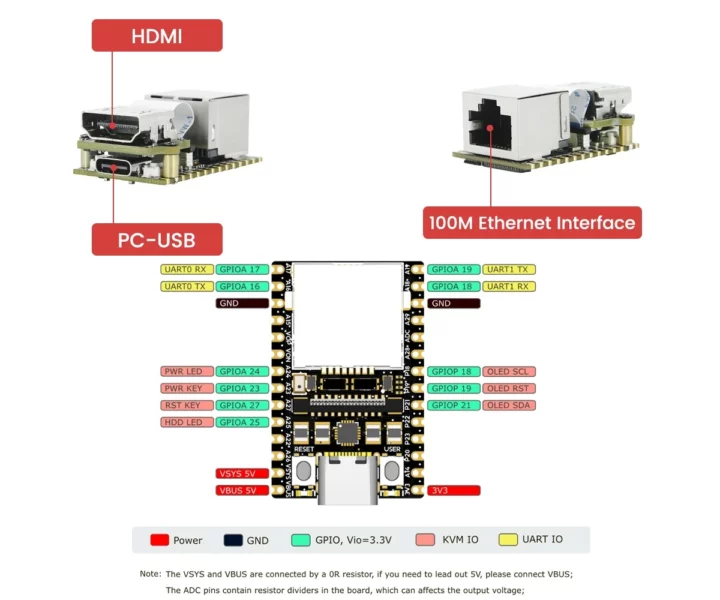
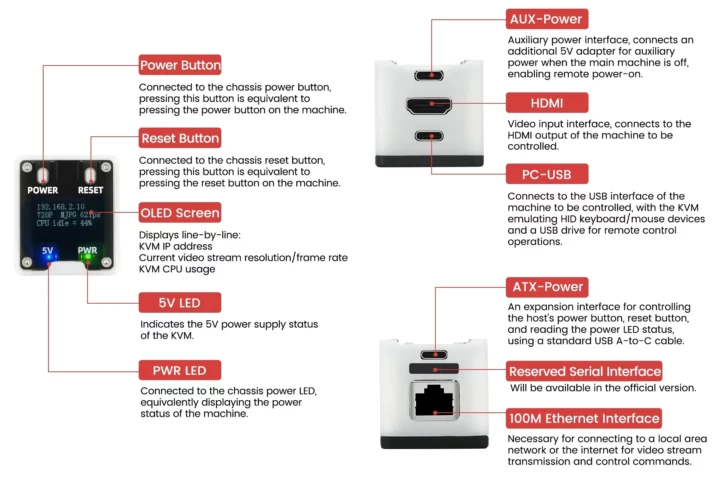
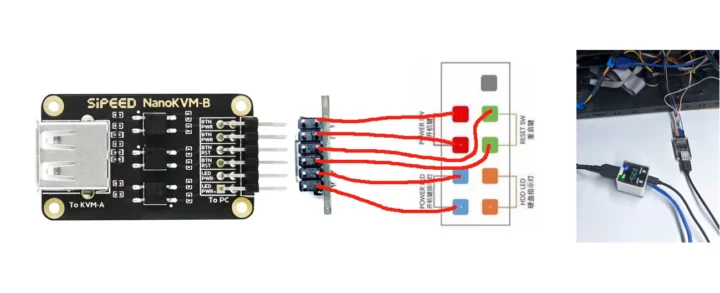
Compared to the latest PiKVM v4, the NanoKVM Full is much smaller, consumes a fraction of the power, has a fanless design, and costs much less. The lag is similar but still in favor of the PiKVM v4 (100 to 160ms vs 100 vs 140ms), ATX power control is done through an Ethernet port on the PiKVM, while it’s done through a USB port on the NanoKVM as shown above, and 4G LTE connectivity is an option that’s not available on Sipeed’s KVM over IP solution.
The wiki is only available in Chinese at the time of writing, but the English version should be up in the next few days, and the GitHub repo for the project provides English documentation and the binary for the closed-source NanoKVM firmware that runs from the microSD card.
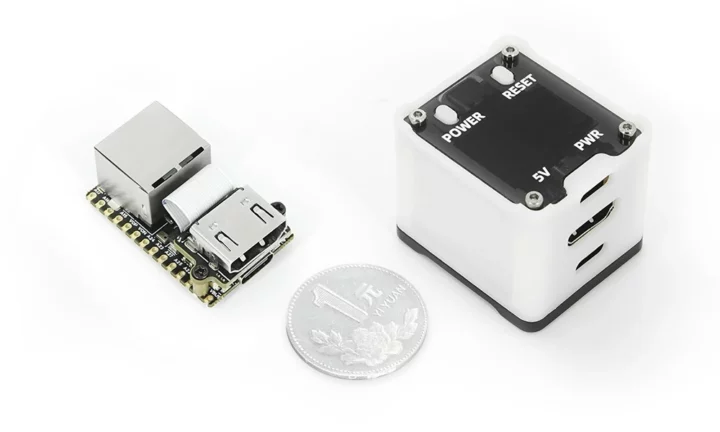
Sipeed will usually launch its new products on Aliexpress. However, this time around the company decided to take pre-orders on its website with pricing for the NanoKVM Lite starting at $20 plus a $2 commission to PayPay and shipping, and the NanoKVM Full is sold for $43 ($40 plus a $3 commission). [Update July 17, 2024: The NanoKVM is now available on AliExpress for $19.73 (Lite) or $39.53 (Full). Needless to say, that’s the cheapest KVM over IP solution I’ve seen so far.

Jean-Luc started CNX Software in 2010 as a part-time endeavor, before quitting his job as a software engineering manager, and starting to write daily news, and reviews full time later in 2011.
Support CNX Software! Donate via cryptocurrencies, become a Patron on Patreon, or purchase goods on Amazon or Aliexpress


